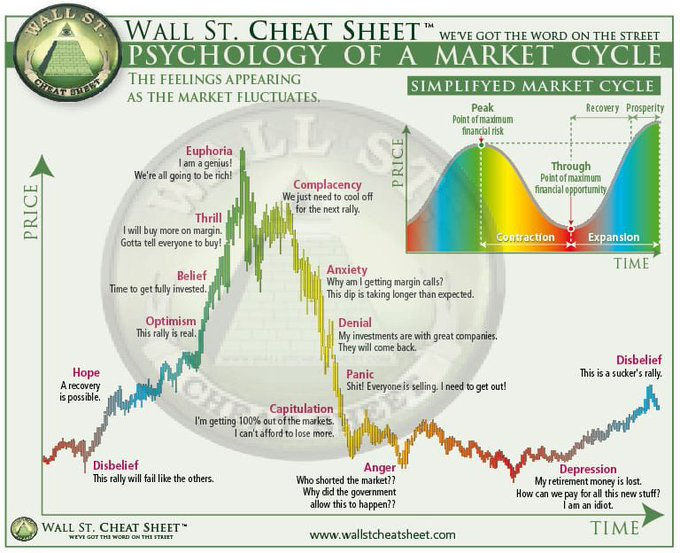Portfolio Strategy - Core Satellite
- Justin Zhenwen Zhang
- Mar 3, 2025
- 3 min read
Updated: May 20, 2025

The core-satellite portfolio strategy is a hybrid investment approach that combines the stability and diversification of passive investing with the potential for higher returns through active management.
This strategy divides a portfolio into two main components:
Core: The foundation of the portfolio, typically comprising 60-80% of the total assets. The core is invested in low-cost, diversified, passive investments such as index funds or exchange-traded funds (ETFs) that track broad market indices (e.g., S&P 500, MSCI World). The goal is to provide stability, reduce risk, and capture market returns with minimal fees.
Satellite: The remaining 20-40% of the portfolio is allocated to actively managed investments
or niche opportunities. These could include individual stocks, sector-specific funds, alternative investments (e.g., real estate, commodities), or thematic strategies (e.g., ESG, technology). The satellite portion aims to outperform the market or target specific opportunities, accepting higher risk for potentially higher returns.
Key Features of the Core-Satellite Strategy
Diversification: The core ensures broad market exposure, reducing risk, while satellites allow targeted bets to enhance returns.
Cost Efficiency: The core’s low-cost index funds keep overall fees down, as satellites often involve higher management fees or trading costs.
Flexibility: Investors can tailor the satellite portion to their risk tolerance, expertise, or market views.
Risk Management: The core stabilizes the portfolio during volatility, while satellites offer upside potential.
Benefits
Balanced Risk-Return Profile: Combines the reliability of market returns with the potential for outperformance.
Adaptability: Satellites can be adjusted to capitalize on market trends or personal convictions (e.g., investing in AI or renewable energy).
Cost Control: The core’s low fees offset the higher costs of active satellite investments.
Challenges
Active Management Risk: Satellite investments may underperform or carry higher volatility.
Time and Expertise: Selecting and managing satellite investments requires research and market knowledge.
Rebalancing Needs: Regular rebalancing is necessary to maintain the desired core-satellite allocation.
Core-Satellite Portfolio Case Study
Portfolio Overview
Total Investment: $100,000
Allocation: 70% Core ($70,000), 30% Satellite ($30,000)
Investment Horizon: 10 years
Risk Tolerance: Moderate
Core Allocation ($70,000)
The core focuses on diversified, low-cost, passive investments to provide stability and market returns.
Vanguard Total Stock Market ETF (VTI): $35,000 (50% of core)
Tracks the CRSP US Total Market Index, covering U.S. equities.
Expense Ratio: 0.03%
Rationale: Broad exposure to U.S. markets, low cost.
iShares MSCI ACWI ex U.S. ETF (ACWX): $21,000 (30% of core)
Tracks global equities excluding the U.S.
Expense Ratio: 0.32%
Rationale: Adds international diversification.
Vanguard Total Bond Market ETF (BND): $14,000 (20% of core)
Tracks the Bloomberg U.S. Aggregate Bond Index.
Expense Ratio: 0.035%
Rationale: Provides income and reduces volatility.
Core Characteristics:
Weighted Average Expense Ratio: 0.11%
Expected Return: Market-like returns (historically 6-8% annually for equities, 2-4% for bonds).
Risk: Low to moderate due to diversification.
Satellite Allocation ($30,000)
The satellite portion targets higher returns through active or thematic investments.
Technology Sector ETF (XLK): $10,000 (33.3% of satellite)
Tracks the Technology Select Sector Index (e.g., Apple, Microsoft).
Expense Ratio: 0.13%
Rationale: Capitalizes on growth in tech driven by AI and innovation.
Individual Stock: Tesla (TSLA): $8,000 (26.7% of satellite)
Rationale: High-conviction bet on electric vehicles and renewable energy.
Risk: High volatility due to single-stock exposure.
ARK Innovation ETF (ARKK): $7,000 (23.3% of satellite)
Actively managed fund focusing on disruptive technologies (e.g., biotech, AI).
Expense Ratio: 0.75%
Rationale: Seeks alpha through active management.
Real Estate Investment Trust (REIT) ETF (VNQ): $5,000 (16.7% of satellite)
Tracks the MSCI US Investable Market Real Estate 25/50 Index.
Expense Ratio: 0.12%
Rationale: Adds diversification through real estate exposure.
Satellite Characteristics:
Weighted Average Expense Ratio: ~0.33%
Expected Return: Potentially 10-15% annually, but with higher volatility.
Risk: Moderate to high due to concentrated bets and active management.
Rebalancing Strategy
Frequency: Quarterly or when allocations deviate by ±5% from targets.
Example: If Tesla stock surges, causing the satellite portion to exceed 35% of the portfolio, sell a portion to reallocate to the core.
Hypothetical Performance (Based on Historical Data)
Core: Assuming a 7% annual return, $70,000 grows to ~$137,948 over 10 years.
Satellite: Assuming a 10% annual return (with higher volatility), $30,000 grows to ~$77,558 over 10 years.
Total Portfolio: ~$215,506 after 10 years, assuming no rebalancing or withdrawals.
Monitoring and Adjustments
Core: Minimal changes unless major market shifts occur.
Satellite: Regularly assess performance of active investments. For example, if ARKK underperforms for two quarters, consider replacing it with another high-conviction fund.
Tools: Use Bloomberg Terminal or Morningstar to track performance and correlations.
Risks
Core: Market downturns may impact returns, though diversification mitigates this.
Satellite: Poor stock selection or sector underperformance (e.g., tech correction) could drag returns.
Mitigation: Maintain discipline in rebalancing and avoid emotional decisions during volatility.


